Preceded by Edmund W.M. Mackey | Preceded by George D. Tillman Role American Politician Succeeded by William Elliott Name Robert Smalls | |
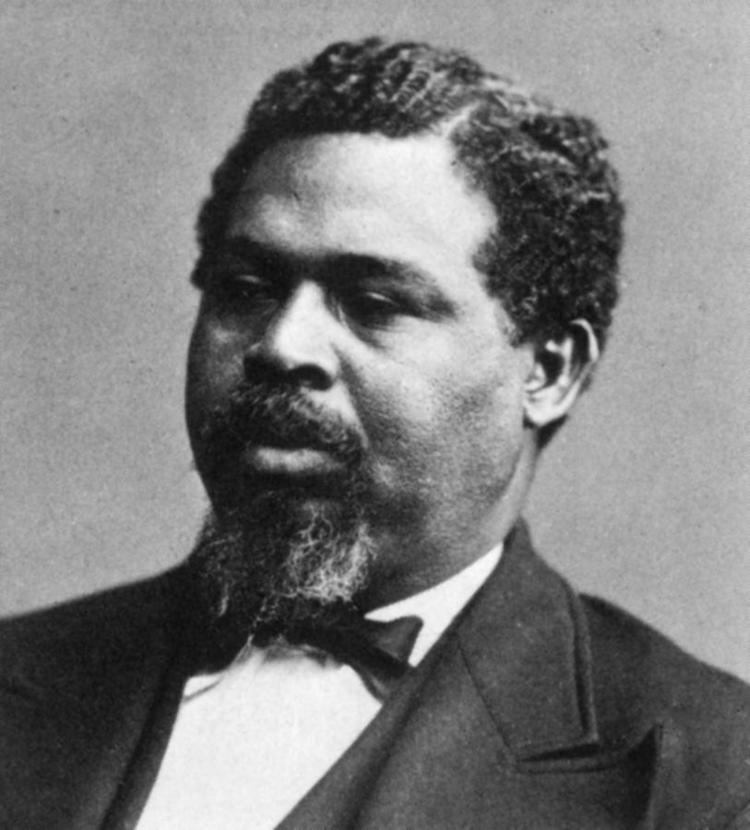 | ||
Preceded by District re-establishedJohn D. Ashmore before district eliminated after 1860 Similar People Blanche Bruce, Hiram Rhodes Revels, Frederick Douglass, Benjamin Lincoln, Mariot Arbuthnot | ||
Allegiance United States of America | ||
Preview the Life & Legacy of Former Slave Robert Smalls
Robert Smalls (April 5, 1839 – February 23, 1915) was an enslaved African American who, during and after the American Civil War, gained freedom and became a ship's pilot, sea captain, and politician. He freed himself, his crew and their families from slavery on May 13, 1862, by commandeering a Confederate transport ship, CSS Planter, in Charleston harbor, and sailing it from Confederate-controlled waters to the U.S. blockade. His example and persuasion helped convince President Lincoln to accept African-American soldiers into the U.S. Army and the U.S. Navy.
Contents
- Preview the Life Legacy of Former Slave Robert Smalls
- Robert smalls yearning to breathe free
- Early life
- Escape from slavery
- Service to the Union
- Commission and prize money
- After the Civil War
- Business ventures
- Political career
- Political affiliation
- State politics
- National politics
- Local politics
- Family
- Honors and legacy
- References
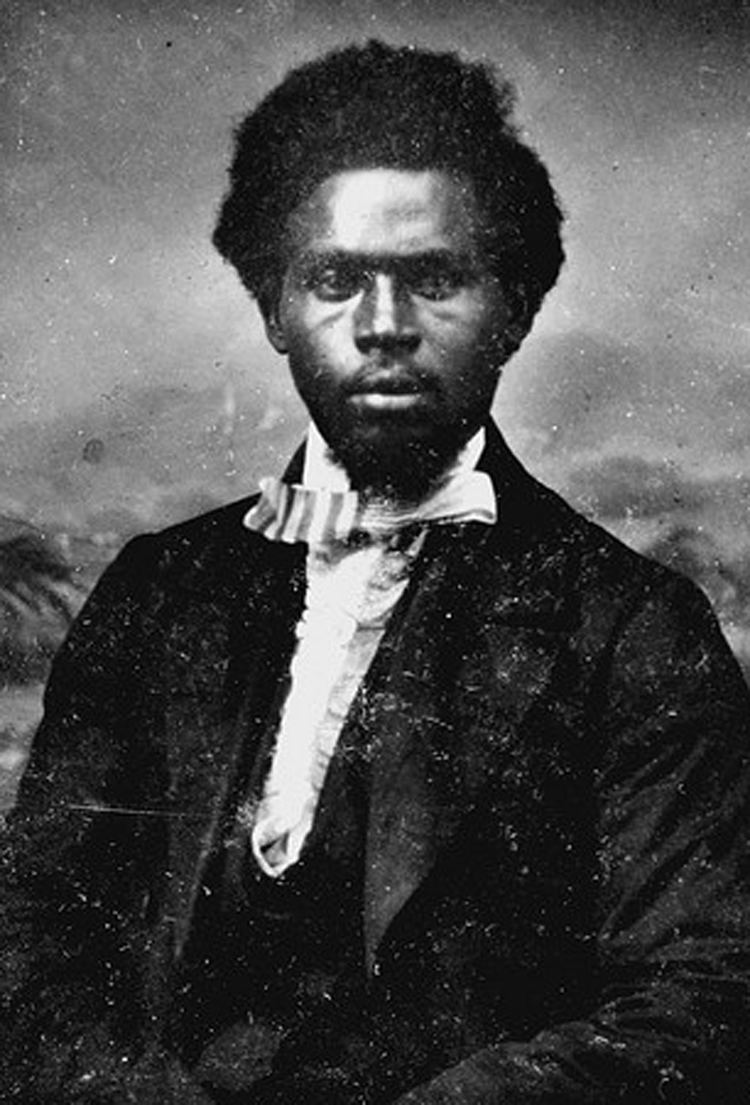
Smalls was born in Beaufort, South Carolina. After the American Civil War, he returned there and became a politician, winning election as a Republican to the South Carolina State legislature and the United States House of Representatives during the Reconstruction era. As a politician, Smalls authored state legislation providing for South Carolina to have the first free and compulsory public school system in the United States. He founded the Republican Party of South Carolina. Due to the state's white Democrats disfranchising most blacks Smalls was the last Republican to represent South Carolina's 5th congressional district until 2010.
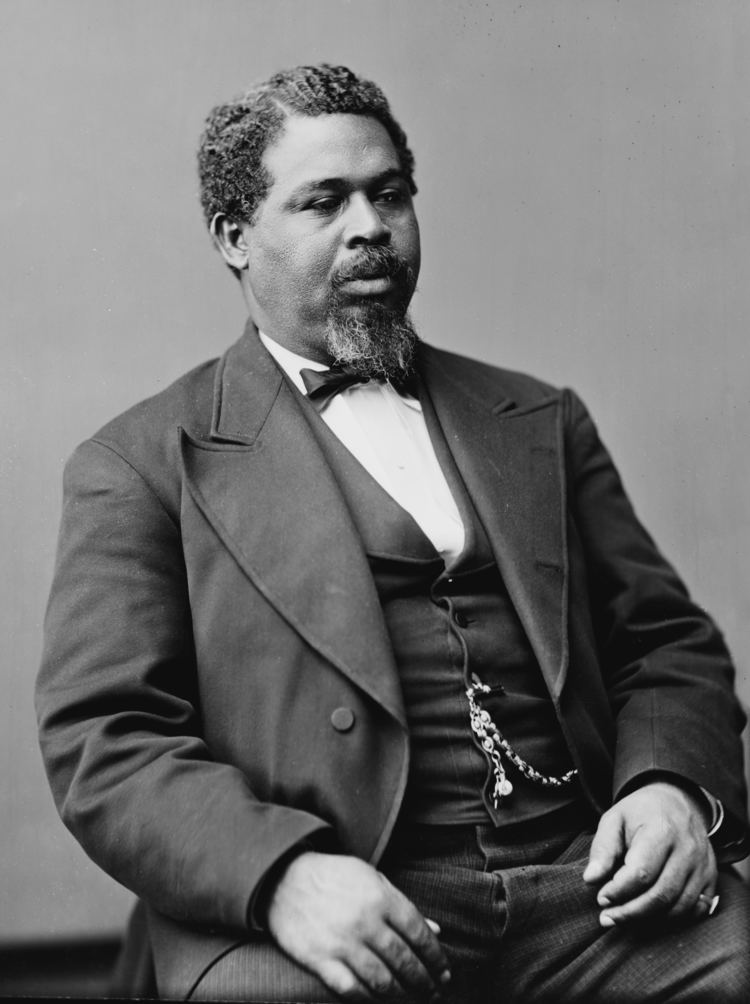
Robert smalls yearning to breathe free
Early life
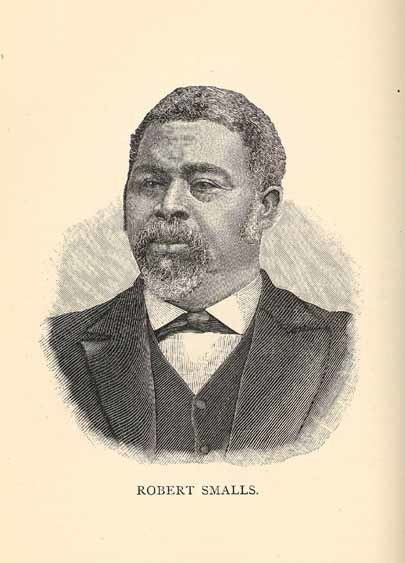
Robert Smalls was born in 1839 as a slave in a cabin behind his master Henry McKee's house on 511 Prince Street in Beaufort, South Carolina. He grew up in the city under the influence of the Lowcountry Gullah culture of his mother, Lydia Polite, a slave of the McKees. His father's name was Robert.
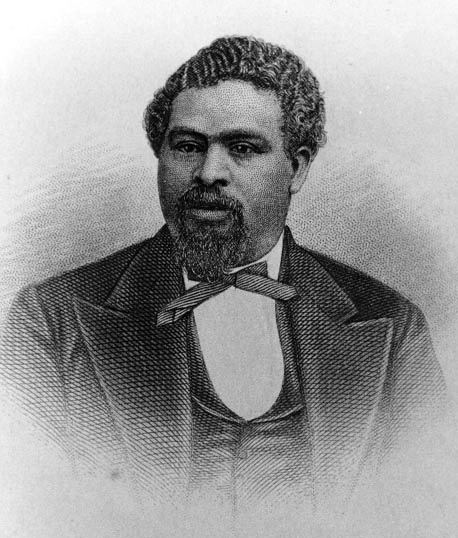
When he was 12, Smalls' master sent him to Charleston to hire out as a laborer, with the money paid to his master. The youth first worked in a hotel, then became a lamplighter on Charleston's streets. In his teen years, his love of the sea led him to find work on Charleston's docks and wharves. Smalls was a stevedore (dockworker), a rigger, a sail maker—and eventually worked his way up to become a wheelman, more or less a pilot, though slaves were not honored by that title. As a result, he was very knowledgeable about Charleston harbor.

At age 17 Smalls married Hannah Jones, an enslaved hotel maid, in Charleston on December 24, 1856. She was five years his senior and already had two daughters. Their own first child, Elizabeth Lydia Smalls, was born in February 1858. Three years later they had a son, Robert Jr., who died at age two.
Escape from slavery
In April 1861, the American Civil War began with the Battle of Fort Sumter in nearby Charleston Harbor. In the fall of 1861, Smalls was assigned to steer the CSS Planter, a lightly armed Confederate military transport under the command of Charleston's District Commander Brigadier General Roswell S. Ripley. Planter's duties were to deliver dispatches, troops and supplies, to survey waterways, and to lay mines. Smalls piloted the Planter throughout Charleston harbor and beyond, on area rivers and along the South Carolina, Georgia and Florida coasts. From Charleston harbor, Smalls and the Planter's crew could see the line of Federal blockade ships in the outer harbor, seven miles away. Smalls appeared content and had the confidence of the Planter's crew and owners, and at some time in April 1862, Smalls began to plan an escape. He discussed the matter with the other slaves in the crew except one, whom he did not trust.
The day of May 12, 1862, the Planter traveled ten miles southwest of Charleston to stop at Coles Island, a Confederate post on the Stono River that was being dismantled. There she picked up four large guns to transport to a fort in Charleston harbor. Back in Charleston, the crew loaded 200 pounds of ammunition and 20 cords of firewood onto the Planter. At some point family members hid aboard another steamer docked at the North Atlantic wharf.
On the evening of May 12, Planter was docked as usual at the wharf below General Ripley's headquarters. Her three white officers disembarked to spend the night ashore, leaving Smalls and the crew on board, "as was their custom." (Afterward, the three Confederate officers were court-martialed and two convicted, but the verdicts were later overturned.) About 3 a.m. May 13, Smalls and seven of the eight slave crewmen made their previously planned escape to the Union blockade ships. Smalls put on the captain's uniform and wore a straw hat similar to the captain's. He sailed the Planter past what was then called Southern Wharf, and stopped at another wharf to pick up his wife and child, and the families of other crewmen.
Smalls guided the ship past the five Confederate harbor forts without incident, as he gave the correct signals at checkpoints. The Planter had been commanded by a Captain Relay, and Smalls copied Relay's manners and straw hat on deck to fool Confederate onlookers from shore and the forts. The Planter sailed past Fort Sumter at about 4:30 a.m. He headed straight for the Union Navy fleet, flying a white bed sheet as a surrender flag. The Planter had been seen by the USS Onward, which was about to fire until a crewman spotted the white flag. The Onward′s captain, John Frederick Nickels, boarded the Planter, and Smalls asked for a United States flag to display. He surrendered the Planter and her cargo to the United States Navy. Smalls' escape plan had succeeded.
In addition to her own light guns, Planter carried the four loose artillery pieces from Coles Island and the 200 pounds of ammunition. Most valuable, however, were the captain's code book containing the Confederate signals, and a map of the mines and torpedoes that had been laid in Charleston's harbor. Smalls' own extensive knowledge of the Charleston region's waterways and military configurations proved highly valuable. At Port Royal he gave detailed information about Charleston's defenses to Admiral Samuel Dupont, commander of the blockading fleet. Federal officers were surprised to learn from Smalls that contrary to their calculations, only a few thousand troops remained to protect the area, the rest having been sent to Tennessee and Virginia. They also learned that the Coles Island fortifications on Charleston's southern flank were being abandoned and were without protection. This intelligence allowed Union forces to capture Coles Island and its string of batteries without a fight on May 20, a week after Smalls' escape. The Union would hold the Stono inlet as a base of operations for the three-year duration of the war.
Service to the Union
Smalls, just turned 23, quickly became known in the North as a hero for his daring exploit. Newspapers reported his actions, and the U.S. Congress passed a bill awarding Smalls and his crewmen the prize money for the Planter. Smalls's share came to US$1,500 (equivalent to $35,985 in 2016). Immediately after the capture, Smalls was invited to travel to New York to help raise money for ex-slaves, but Admiral DuPont vetoed the proposal and Smalls began to serve the Union Navy. However, with the encouragement of Major General David Hunter, the Union commander at Port Royal, Smalls went to Washington, D.C., in August 1862 with Mansfield French. He wanted to persuade Lincoln and Secretary of War Edwin Stanton to permit black men to fight for the Union. He was successful; Stanton signed an order permitting up to 5,000 African Americans to enlist in the Union forces at Port Royal. Those who did were organized as the 1st and 2nd South Carolina Regiment (Colored). Smalls worked as a civilian with the Navy until March 1863, when he was transferred to the Army. By his own account, Smalls was present at 17 major battles and engagements in the Civil War.
After capture, the Planter required some repairs, which were performed locally, and went into Union service near Fort Pulaski. The boat was valued for its shallow draft, compared to other boats in the fleet. Smalls was made pilot of the Crusader under Captain Alexander Rhind. In June of that year, Smalls was piloting the Crusader on Edisto in Wadmalaw Sound when the Planter returned to service, and an infantry regiment engaged in the Battle of Simmon's Bluff at the head of the Edisto River. He continued to pilot the Crusader and the Planter. As a slave, he had assisted in laying mines (then called "torpedoes") along the coast and river. Now, as a pilot, he helped find and remove them, and serviced the blockade between Charleston and Beaufort. He was also present when the Planter was fired upon at several fights at Adam's Run on the Dawho river, and at battles at Rockville, at John's Island, and at the Second Battle of Pocotaligo.
He was made pilot of the ironclad USS Keokuk, again under captain Rhind, and took part in the attack on Fort Sumter on April 7, 1863, which was a preamble to the Second Battle of Fort Sumter later that fall. The Keokuk took 96 hits and retired for the night, sinking the next morning. Smalls and much of the crew moved to the Ironside and the fleet returned to Hilton Head.
In June 1863, David Hunter was replaced as commander of the Department of the South by Quincy Adams Gillmore. With Gillmore's arrival, Smalls was transferred to the quartermaster's department. Smalls was pilot of the USS Isaac Smith, later recommissioned in the Confederate Navy the Stono in the expedition on Morris Island. When Union troops took the south end of the Island, Smalls was put in charge of the Light House Inlet as pilot.
On December 1, 1863, Smalls was piloting the Planter under Captain James Nickerson on Folly Island Creek when Confederate batteries at Secessionville opened. Nickerson fled the pilot house for the coal-bunker. Smalls refused to surrender, fearing that the black crewmen would not be treated as prisoners of war and might be summarily killed. Smalls entered the pilothouse and took command of the boat and piloted her to safety. For this, he was reportedly promoted by Gillmore to the rank of captain and made acting captain of the Planter.
In May 1864, he was voted an unofficial delegate to the Republican National Convention in Baltimore. Later that spring, Smalls piloted the Planter to Philadelphia for an overhaul. In Philadelphia, he supported what was known as the Port Royal Experiment, an effort to raise money to support the education and development of ex-slaves. At the outset of the civil war, Smalls could not read or write, but he achieved literacy in Philadelphia. In 1864, Smalls was in a streetcar in Philadelphia and was ordered to give his seat to a white passenger. Rather than ride on the open overflow platform, Smalls left the car. This incident of humiliating an heroic veteran was cited in the debate that resulted in the legislature's passing a bill to integrate public transportation in Pennsylvania in 1867.
In December, 1864, Smalls and the Planter moved to support William T. Sherman's army in Savannah, Georgia, at the destination point of his March to the Sea. Smalls returned with the Planter to Charleston harbor in April 1865 for the ceremonial raising of the American flag again at Fort Sumter. Smalls was discharged on June 11, 1865. Other vessels Smalls piloted during the war include the Huron and the Paul Jones. He continued to pilot the Planter, serving a humanitarian mission of taking food and supplies to freedmen who lost their homes and livelihoods during the war. On September 30, the Planter entered the service of the Freedmen's Bureau.
Commission and prize money
Smalls' position in the Union Army and Navy has been disputed and Smalls' reward for the capture of the Planter has been criticized. During Smalls' life, articles about Smalls state that when he was assigned to pilot the Planter, the Navy did not allow him to hold the rank of pilot because he was not a graduate of a naval academy, a requirement at that time. To assure he received proper pay for a captain, he was commissioned second lieutenant of the 1st South Carolina Volunteers (later re-designated as the 33rd US Colored Infantry) and detailed to act as pilot. Many sources also state that General Gillmore promoted Smalls to captain in December 1863 when he saved the Planter when it was under attack near Secessionville. Later sources state that Smalls did receive a commission either in the Army or the Navy, but he was likely officially a civilian throughout the war.
Later in his life, when Smalls sought a Navy pension, he learned that he had not been officially commissioned. He claimed he had received an official commission from Gillmore but had lost it. In 1883, a bill passed committee to put him on the Navy retired list, but in the end was halted, allegedly due to Smalls' being black. In 1897, a special act of congress granted Smalls a pension of $30 per month, equal to the pension for a Navy Captain.
In 1883, during discussion of the bill to put Smalls on the Navy retired list, a report stated that the 1862 appraisal of the Planter was "absurdly low" and that a fair valuation would have been over $60,000. However, Smalls received no further payment until 1900. That year, Congress passed a statute paying Smalls $5,000 less the amount paid to him in 1862 ($1,500) for his capture of the steamship. Many still felt that this was less than his due.
After the Civil War
Immediately following the war, Smalls returned to his native Beaufort, where he purchased his former master's house at 511 Prince St, which Union tax authorities had seized in 1863 for refusal to pay taxes. Later, the former owner sued to regain the property, but Smalls retained ownership in the court case. The case became an important precedent in other, similar cases. His mother, Lydia, lived with him for the remainder of her life. He allowed his former master's wife, the elderly Jane Bond McKee, to move into her former home prior to her death. Smalls spent nine months learning to read and write. He purchased a two-story Beaumont building to use as a school for African-American children.
Business ventures
In 1866 Smalls went into business in Beaufort with Richard Howell Gleaves, a businessman from Philadelphia. They opened a store to serve the needs of freedmen. Smalls also hired a teacher to help him study. That April, the Radical Republicans who controlled Congress overrode President Andrew Johnson's vetoes and passed a Civil Rights Act. In 1868, they passed the 14th Amendment, which was ratified by the states to extend full citizenship to all Americans regardless of race.
Smalls invested significantly in the economic development of the Charleston-Beaufort region. In 1870, in anticipation of a Reconstruction-based prosperity, Smalls, with fellow representatives Joseph Rainey, Alonzo Ransier and others, formed the Enterprise Railroad, an 18-mile horse-drawn railway line that carried cargo and passengers between the Charleston wharfs and inland depots. Except for one white director, the Railroad's board of directors was entirely African American. Richard H. Cain was its first president. Author Bernard E. Powers describes it as "the most impressive commercial venture by members of Charleston's black elite." He owned and helped publish a black-owned newspaper, the Beaufort Southern Standard starting in 1872.
Political career
Small's wartime fame and his fluency with the Gullah dialect gave him an avenue for political advancement.
Political affiliation
Smalls was a loyal Republican. On August 22, 1912, he wrote to U.S. Senator Knute Nelson, "I never lose sight of the fact that had it not been for the Republican Party, I never would have been an office-holder of any kind—from 1862 to the present." In words that became famous, he described his party as "the party of Lincoln...which unshackled the necks of four million human beings". He wrote this line on September 12, 1912, in a letter expressing his anxiety over the looming presidential election. He concluded that letter, "I ask that every colored man in the North who has a vote to cast, would cast that vote for the regular republican party and thus bury the democratic party so deep that there will not be seen even a bubble coming from the spot where the burial took place."
State politics
Smalls was a delegate at the 1868 South Carolina Constitutional Convention where he was a part of the effort to make free, compulsory schooling available to all South Carolina children. He also served as a delegate at several Republican National Conventions; he also participated in the South Carolina Republican State conventions.
In 1868, Smalls was elected to the South Carolina House of Representatives. He was very effective, and introduced the Homestead Act and introduced and worked to pass the Civil Rights bill. In 1870, Jonathan Jasper Wright was elected judge of the South Carolina Supreme Court and Smalls was elected to fill his unexpired time in the Senate. He continued in the Senate, winning the 1872 election against W. J. Whipper. In the senate he was considered a very good speaker and debater. He was on the Finance Committee and chairman of the Public Printing Committee.
He was a delegate to the National Republican Conventions in 1872 in Philadelphia, which nominated Grant for president; and in 1876 in Cincinnati, which nominated Hayes; and in 1884 in Chicago, which nominated Blaine—and then continuously to all conventions until 1896.
In 1873, he was appointed lieutenant-colonel of the Third regiment, South Carolina State Militia. He was later promoted to brigadier-general of the Second Brigade, South Carolina Militia, and the major-general of the Second Division, South Carolina State Militia. He held this position until 1877, when Democrats took control of the state government.
National politics
In 1874, Smalls was elected to the United States House of Representatives, where he served two terms from 1875 to 1879. From 1882 to 1883 he represented South Carolina's 5th congressional district in the House. The state legislature gerrymandered to change the district boundaries, including Beaufort and other heavily black, coastal areas in South Carolina's 7th congressional district, giving the others substantial white majorities. Smalls was elected from the 7th district and served from 1884 to 1887. He was a member of the 44th, 45th, and 47th through 49th U.S. Congresses.
In 1875, he opposed the transfer of troops out of the South, fearing the effect of such a move on the safety of blacks in the South. During consideration of a bill to reduce and restructure the United States Army, Smalls introduced an amendment that "Hereafter in the enlistment of men in the Army ... no distinction whatsoever shall be made on account of race or color." However, the amendment was not considered by Congress. He was the last Republican elected from the 5th district until 2010. He was the second-longest serving African-American member of Congress (behind his contemporary Joseph Rainey) until the mid-20th century.
After the Compromise of 1877, the U.S. government withdrew its remaining forces from South Carolina and other Southern states. Conservative Southern Bourbon Democrats, who called themselves the Redeemers, had resorted to violence and election fraud to regain control of the state legislature. As part of wide-ranging white efforts to reduce African-American political power, Smalls was charged and convicted of taking a bribe five years earlier in connection with the awarding of a printing contract. He was pardoned as part of an agreement by which charges were also dropped against Democrats accused of election fraud.
The scandal took a political toll, and he was defeated by Democrat George D. Tillman in the senate election in 1878, and again, narrowly, in 1880. He successfully contested the 1880 result and regained the seat in 1882. In 1884 he was elected to fill a seat in a different district. He was nominated for Senate but defeated by Wade Hampton in 1886. During this period in Congress he supported racial integration legislation, supported a pension for the widow of his former Major General, David Hunter, and advised South Carolina blacks to refrain from emigrating to the North and Midwest or to Liberia.
In 1890 he was appointed by president Benjamin Harrison as collector of the Port of Beaufort, which he held until 1913 except during Democrat Grover Cleveland's second term. Smalls was active into the twentieth century. He was a delegate to the 1895 South Carolina constitutional convention. Together with five other black politicians, he strongly opposed white Democratic efforts that year to disfranchise black citizens. They wrote an article for the New York World to publicize the issues, but the state constitution was ratified. It and similar constitutions across the South for some time passed challenges that reached the US Supreme Court, resulting in the exclusion of African Americans from politics across the South and crippling of the Republican Party in the region.
In the late 1890s he began to suffer from diabetes. He turned down an offer of a colonelcy of a black regiment in the Spanish–American War and to the post of minister to Liberia.
Local politics
Though Smalls was not officially involved with politics on the local level, he did, nevertheless have some influence. In 1913, in one of his final actions as community leader, he played an important role in stopping a lynch mob from killing two black suspects in the murder of a white man. He pressured the mayor, saying that blacks he had sent throughout the city would burn the town down if the mob was not stopped. The mayor and sheriff stopped the mob.
Family
With his first wife, Hannah Jones Smalls, Robert Smalls had three children: Elizabeth Lydia (1858-1959; m. Samuel Jones Bampfield, nine living children); Sarah Voorhies (1863-1920, m. Dr. Jay Williams, no children); and Robert, Jr., who died at the age of two. Hannah Jones Smalls had two daughters before she met and married Robert Smalls: Charlotte Jones (m. Willie Williams) and Clara Jones (m. James Rider). Smalls and his family were affiliated with the Baptist Church and attended Berean Baptist Church when living in Washington, DC.
Hannah Smalls died on July 28, 1883. On April 9, 1890, Robert Smalls married Annie E. Wigg, a Charleston schoolteacher, who bore him one son, William Robert Smalls (1892–1970). Annie Smalls died on November 5, 1895.
Smalls died of malaria and diabetes in 1915 at the age of 75. He was buried in his family's plot in the churchyard of the Tabernacle Baptist Church in downtown Beaufort. The monument to Smalls in this churchyard is inscribed with a statement he made to the South Carolina legislature in 1895: "My race needs no special defense, for the past history of them in this country proves them to be the equal of any people anywhere. All they need is an equal chance in the battle of life."
